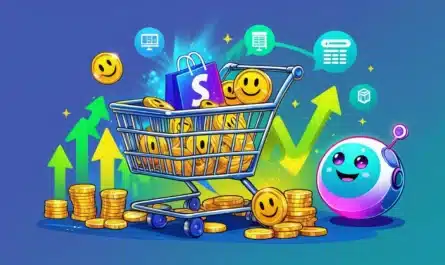When it comes to technology, the term conversational ia has become an essential reference point. This field, which fuses artificial intelligence and the science of language, is revolutionizing the way we interact with our digital tools. Whether it’s placing a quick online order or requesting automated customer service, these solutions are multiplying and becoming essential to our daily lives.
What is conversational ia?
Conversational ia encompasses a range of technologies capable of interacting with people in written or spoken form, imitating genuine natural communication. Thanks to advances in natural language processing (taln/nlp) and machine learning, these solutions go far beyond the simple scripted robot of yesteryear.
Chatbots and other conversational agents are among the leading tools. These systems analyze the text transmitted by the user, understand its meaning, then deliver coherent, personalized and often very rapid responses. The aim is always to make each exchange as fluid as a discussion between humans.
How does conversational ia work?
The operation of a conversational ia platform relies primarily on two technological pillars: natural language processing andmachine learning. Together, these disciplines combine semantic understanding with progressive adaptation thanks to the analysis of data accumulated during previous dialogues.
- 🗣️ Natural language processing (nlp/taln)
- 🤖 Machine learning
- 🔄 Continuous interaction with humans
- 📊 Analysis and continuous improvement
The processing chain starts as soon as a message is received, goes through an advanced syntactic analysis, and then draws on an enriched knowledge base to generate the most relevant response possible. The more theconversational agent interacts, the more it refines its understanding and corrects any misinterpretations.
This virtuous circle gradually transforms the basic chatbot into a truly intelligent assistant, capable of handling subtle and complex contexts. We’re seeing the emergence of bots capable of grasping irony, detecting emotional nuances or even understanding the hidden intentions behind indirect formulations.
Concrete applications of conversational ia
Automated customer service and technical support
In many sectors,artificial intelligence applied to dialogue marks the end of interminable telephone waits. Companies are now adopting conversational ia platforms to answer frequently asked questions instantly, guide them through the usual steps, or prioritize requests requiring human intervention.
Thanks to this automation of customer service, companies are seeing time savings, enhanced satisfaction and significant cost reductions. Chatbots take care of the majority of simple queries, leaving human advisors to carry out high value-added missions.
Human interaction and personalization in e-commerce
In the e-commerce sector, conversational agents are also helping to transform the user experience. They accompany Internet users as soon as they arrive on a site, recommend products adapted to their profile, manage returns or quickly solve any problem encountered during a purchase.
This simulated human interaction creates a feeling of closeness and fosters customer loyalty. The natural communication offered by these tools also gives a modern, innovative image, proof of our constant adaptation to new consumer expectations.

What are the advantages and limitations of conversational agents?
The main advantages of conversational ia
The growing popularity ofconversational ia is no accident. Several major arguments are regularly put forward by those who have adopted these solutions:
- ⏰ 2 4/7 availability: no time constraints, robots respond around the clock.
- 🚀 Near-instantaneous response time: immediate handling of requests.
- 💬 Consistency of speech: no variations due to mood or fatigue.
- 📈 C ontinuous improvement: every interaction enriches the algorithms.
Another key advantage lies in the ability to handle a large number of requests simultaneously without ever reaching saturation point, where a conventional call center would need to recruit or train more staff. This is why so many organizations are making long-term investments in this type of conversational technology, often integrated with other digital channels.
Technical and human challenges
Althoughconversational ia has made great strides, certain situations still highlight its limitations. Sometimes the context exceeds the capabilities of natural language processing, making it difficult to understand complex or ambiguous questions.
The absence of real empathy is also a hindrance for some users, particularly when the problem goes beyond the scope of theconversational agent. Human vigilance therefore remains essential to guarantee a complete, reassuring and effective experience.
| 🌟 Benefits | ⚠️ Limits |
|---|---|
| Permanent responsiveness | Interpretation may be approximate |
| Mass processing of requests | Lack of human emotion |
| Automatic continuous improvements | The need for human supervision |
Why integrate a conversational ia platform into an organization?
Adopting a solution based on conversational ia offers many benefits, far beyond basic assistance. From public administrations to innovative startups, many are seeing a positive impact on their customer relations, internal processes and brand image.
Optimizing workload management, streamlining natural communication with all types of audience, rapidly deploying multilingual assistants… These are just some of the reasons behind this strategic choice. Without sacrificing the human aspect, the combination of these technologies gives rise to a hybrid model, combining automation and targeted intervention as and when required.
- 📝 Simplifying telephone reception
- 🌍 Increased accessibility (multilingual, extended opening hours)
- 👥 Adaptability to different user profiles
- 💡 Reducing manual effort on repetitive tasks
Integration can be gradual, starting with urgent or recurring needs, before extending to more complex functions such as internal training or collaborative project management.

Frequently asked questions about conversational ia
What are the typical uses of a conversational agent in a company?
Conversational agents are mainly used to automate customer support, welcome virtual visitors to a website, assist with administrative data entry or broadcast personalized notifications. Some sectors also use these tools to diagnose IT incidents, supervise training courses or conduct post-service satisfaction surveys.
- ☎️ Incoming call management
- 🛒 E-commerce purchasing assistance
- 📝 Booking or registration assistance
Does conversational ia only work in French?
No,conversational ia is designed to work in many languages, provided it has the right datasets and is properly trained via natural language processing (nlp). This makes it possible to offer multilingual assistance, making services accessible to a wider, more inclusive audience.
- 🌐 French, English, Spanish…
- 🎯 Multi-channel web, voice, mobile app
Can a chatbot learn on its own?
Yes, when it incorporates the principles of machine learning, a chatbot can analyze past interactions to improve its efficiency. It then refines its responses and better anticipates users’ needs, thanks to corrections made by humans or conversational ia platform managers.
- 🔄 Adjustments based on user experience
- 📚 Regular updates with new scenarios
- 🥇 Automatic optimization of the most frequently used routines
Where can you already find conversational ia in everyday life?
The vast majority of e-commerce sites, banking platforms and social networks are now equipping their interfaces with chatbots. Other sectors, such as healthcare and education, are also banking on these technologies to organize appointments, send reminders or facilitate personalized follow-up.
| 🏦 Sector | 💬 Examples of use |
|---|---|
| After Sales & Customer Service | 24-hour automatic response |
| Education | Interactive tutorials, personalized support |
| Health | Screening, referral, reminder of consultations |






